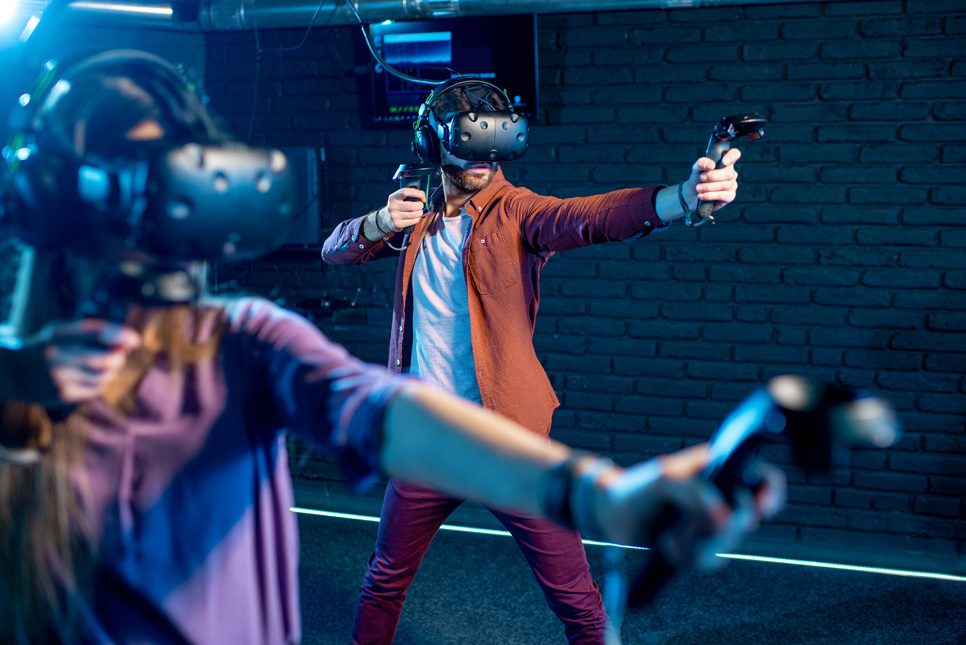In the ever-evolving digital landscape, the gaming industry stands out as a vibrant and rapidly changing sector, constantly influenced by new technologies and shifting player expectations. As video games become increasingly immersive and sophisticated, so too do the methods by which companies advertise within these virtual environments. The future of in-game advertising is being shaped by groundbreaking technologies such as augmented reality (AR), virtual reality (VR), and artificial intelligence (AI), which promise to redefine the relationship between brands and gamers. This article explores how these emerging technologies are set to transform in-game advertising, creating more engaging and interactive experiences that resonate with players.
Innovative In-Game Advertising: The Role of AR and VR
Augmented reality and virtual reality have emerged as frontrunners in the race to enhance in-game advertising. By blending the digital and physical worlds, AR allows for the creation of immersive ads that can overlay the real environment with digital content. Pokémon GO is a prime example of how AR can be harnessed for both gaming and promotional purposes, turning real-world locations into hubs for in-game activity and, potentially, targeted advertising. In the context of in-game advertising, AR can offer personalized ad experiences that leverage the player’s immediate environment, enhancing the sense of immersion without pulling them out of the game world.
Virtual reality, on the other hand, offers a fully immersive experience that can transport players into entirely new realms. VR’s potential for in-game advertising lies in its ability to create captivating environments where ads can be integrated naturally into the gameplay or the game’s narrative. For instance, branded virtual spaces within games can provide players with unique experiences, such as exclusive content or special in-game items, while simultaneously promoting a product or service. This seamless integration of advertising content ensures that ads enhance rather than interrupt the gaming experience.
The Power of Artificial Intelligence in In-Game Advertising
Artificial intelligence is another transformative technology reshaping in-game advertising. AI can analyze vast amounts of data on player behavior, preferences, and engagement, enabling advertisers to deliver highly personalized ad content. Machine learning algorithms can predict when and where ads will be most effective, optimizing ad placement to increase relevance and minimize disruption. Furthermore, AI can be used to create dynamic in-game ads that change based on real-time data, ensuring that messaging remains timely and relevant.
Moreover, AI-powered virtual characters or bots can serve as brand ambassadors within games, interacting with players in natural, conversational ways. These AI entities can offer personalized recommendations or information about products, making the ad experience feel more like a natural part of the game. This approach not only enhances engagement but also builds positive associations with the advertised brand.
Meeting and Surpassing Gamer Expectations
As the integration of new technologies in in-game advertising progresses, it’s crucial to keep in mind the expectations and preferences of the gaming community. Today’s gamers are looking for ads that are non-intrusive, relevant, and add value to their gaming experience. Achieving this delicate balance requires a deep understanding of the gaming audience and creative approaches to ad integration. For instance, rewarded video ads, which offer in-game rewards in exchange for watching ads, have gained popularity for their ability to provide value to both players and advertisers.
The future of in-game advertising will likely be characterized by experiences that are not only personalized and immersive but also interactive. Advertisements could evolve into mini-games or interactive narratives that engage players in ways traditional ads cannot. By creating ad experiences that are genuinely entertaining and engaging, brands can forge stronger connections with their audience.
Staying Ahead of the Curve
For businesses looking to leverage in-game advertising effectively, staying ahead of technological advancements is key. Companies must invest in understanding AR, VR, and AI, and how these technologies can be applied to create compelling ad experiences. This may involve partnering with gaming companies and technology providers or building in-house expertise in game design and interactive storytelling.
Furthermore, success in the future in-game advertising landscape will require a commitment to respecting player preferences and privacy. Advertisers must navigate the fine line between personalization and intrusion, ensuring that ad content is relevant without compromising player data or overstepping boundaries.
Wrapping It All Up
The future of in-game advertising is bright, driven by the integration of augmented reality, virtual reality, and artificial intelligence. These technologies offer unprecedented opportunities to create ads that are not only more immersive and personalized but also more engaging and meaningful to gamers.
As the digital and gaming landscapes continue to evolve, the brands that succeed will be those that embrace innovation, prioritize player experience, and adapt to the changing expectations of a discerning audience. In-game advertising is poised to become a more integral and accepted part of the gaming experience, offering new avenues for creativity, engagement, and connection between brands and players.
The coming years will undoubtedly see further exciting developments in this space, as new technologies and gamer expectations continue to shape the future of in-game advertising.



